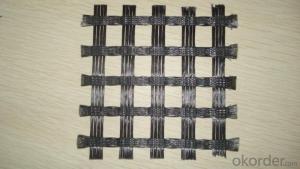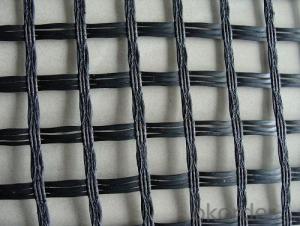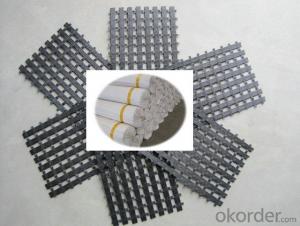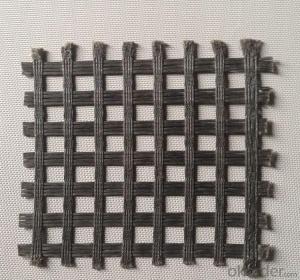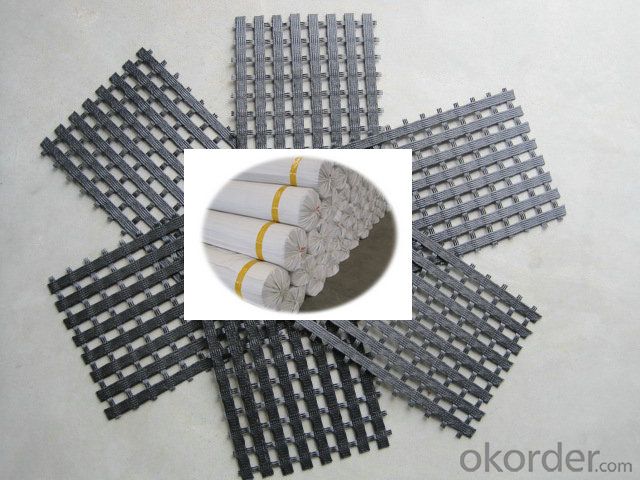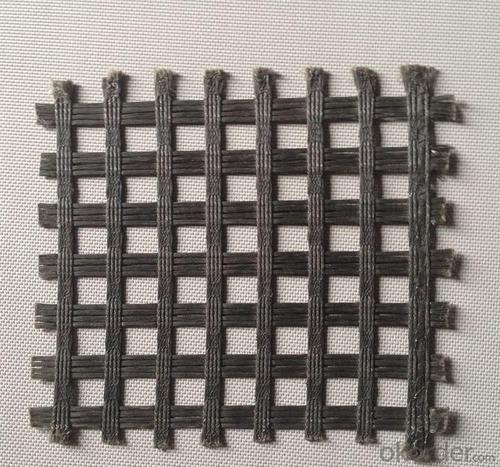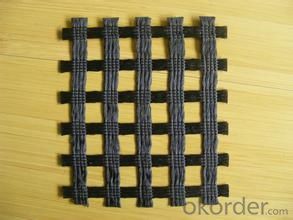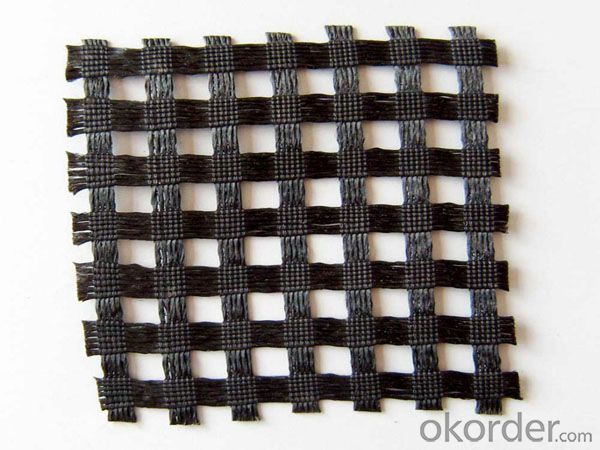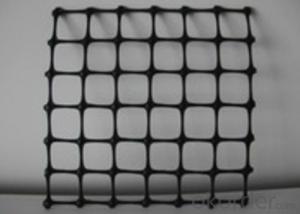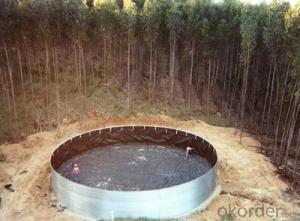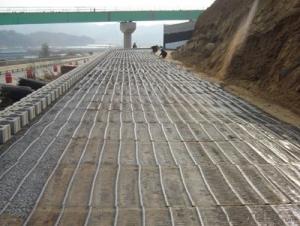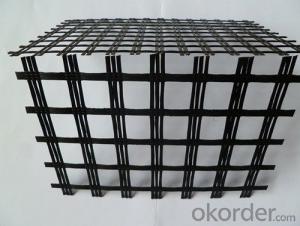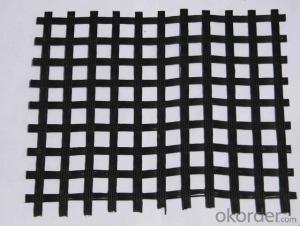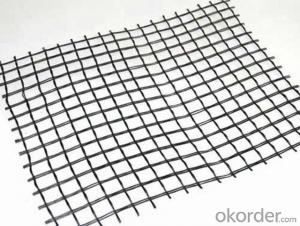Televev Biaxial Coal Mine Safety Polyester Geogrid
- Loading Port:
- Tianjin
- Payment Terms:
- TT OR LC
- Min Order Qty:
- 500 m²
- Supply Capability:
- 100000 m²/month
OKorder Service Pledge
OKorder Financial Service
You Might Also Like
High tensile Strength Polyester Biaxial Geogrid
Polyester Biaxial Geogrid Introduction
High tensile Strength Polyester Biaxial Geogrid select high strength synthetic fiber as raw material, adopt warp knitting oriented structure, and no curving between latitude and longitude fiber, use high strength filament on the intersection point to from firm bonding point, and fully perform the mechanical property.
Polyester Biaxial Geogrid Feature
Warp-knitting polyester geogrid has the characteristics such as high strength, high modulus, low elongation, anti-ageing, and anti-brittle, high tensile strength, high tear strength, strong bonding force with gravel and soil, and multiple pre-designed.
Polyester Biaxial Geogrid Application Range
Strengthening weak sub grades of high-grad roads and railways, and separating different foundation soil materials.
Used in riverbank, slope and earth-preserving wall.
Enhancing varieties of the foundation.
Used in airport runway.
Polyester Biaxial Geogrid Technical Parameter
HPET Bi-grid
Project/Size | PET 150-150 | PET 200-200 | PET 260-260 | PET 300-300 | PET 350-350 | PET 400-400 | PET 500-500 | PET 600-600 | PET 700-700 | PET 800-800 | PET 900-900 | PET 1000-1000 | |
Elongation rate % | ≤13 | ≤13 | ≤13 | ≤13 | ≤13 | ≤13 | ≤13 | ≤13 | ≤13 | ≤13 | ≤13 | ≤13 | |
Intensity (KN/m) | vertical | 150 | 200 | 260 | 300 | 350 | 400 | 500 | 600 | 700 | 800 | 900 | 1000 |
Horizontal | 150 | 200 | 260 | 300 | 350 | 400 | 500 | 600 | 700 | 800 | 900 | 1000 | |
Grid size (mm) | 25×25 40×40 50×50 | ||||||||||||
Width (m) | 1-6 | 1-6 | 1-6 | 1-6 | 1-6 | 1-6 | 1-6 | 1-6 | 1-6 | 1-6 | 1-6 | 1-6 | |
Packaging & Delivery
| Packaging Details: | plastic pipe + black PE membrane |
| Delivery Detail: | one 40HQ within 15 days after receipt of T/T or L/C at sight |
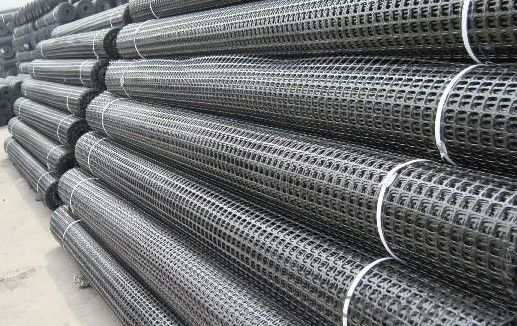
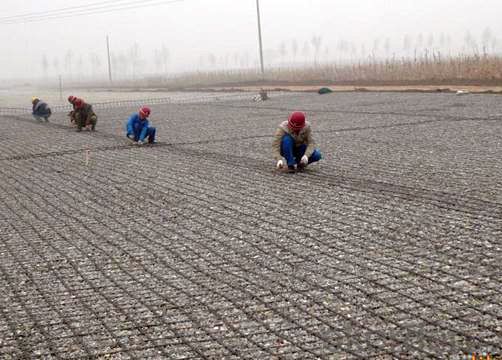


FAQ
1. How about the delivery time?
Lead time since receipt of 30% T/T deposit payment: 3 weeks.
2. What kind of payments does jenor support?
T/T, L/C, Cash are accepted.
3. What's are the MOQ?
We can according to your condition to set the MOQ.
And we can provide you samples for quality inspection.
4. Do you charge for the samples?
Accordeing to our company policy, the samples are freee, we only charge the freight fee. And we will return the freight fee If you set the order .
5. Can you produce the product according to customers' requirements ?
Sure, we are professional manufacturer, OEM and ODM are both welcome.
6. Can you tell me your main customers?
That's our customers' privacy, we should protect their information. At the same time, please rest assured that your information is also safe here.
- Q: How do geogrids improve the performance of geotextile containers?
- Geogrids improve the performance of geotextile containers by providing additional tensile strength and stability to the structure. They reinforce the geotextile material, preventing it from stretching or sagging under the weight of the contained materials. This enhances the container's ability to retain its shape, withstand external forces, and overall improves its structural integrity.
- Q: Are geogrids suitable for use in temporary retaining walls?
- Yes, geogrids are suitable for use in temporary retaining walls. Geogrids are highly versatile and effective in stabilizing soil and preventing erosion. They provide reinforcement to the retaining wall structure, increasing its strength and stability. Additionally, geogrids are easy to install and can be reused in different applications, making them a cost-effective solution for temporary retaining walls.
- Q: How do geogrids improve the stability of railway embankments?
- Geogrids improve the stability of railway embankments by providing reinforcement and preventing soil movement. They distribute the load more evenly, reducing the potential for settlement and slope failure. Additionally, geogrids increase the bearing capacity of the embankment, enhancing its overall stability and longevity.
- Q: How do geogrids improve the performance of flexible retaining walls?
- Geogrids improve the performance of flexible retaining walls by providing reinforcement and stability to the soil behind the wall. They help distribute the lateral pressure from the retained soil, reducing the risk of wall failure. Additionally, geogrids increase the overall strength of the wall, allowing it to withstand greater loads and forces.
- Q: What are the factors that affect the cost-effectiveness of geogrid-reinforced structures?
- There are several factors that can affect the cost-effectiveness of geogrid-reinforced structures. These include the type and quality of geogrid material used, the design and engineering of the structure, the site conditions and soil properties, the construction methods employed, and the maintenance and lifespan of the structure. Additionally, factors such as material availability and transportation costs, labor expenses, and any required permits or regulatory compliance can also impact the overall cost-effectiveness of geogrid-reinforced structures.
- Q: What are the differences between geogrids and geocells?
- Geogrids and geocells are both materials used for soil reinforcement and stabilization, but they have distinct differences. Geogrids are typically made of high-strength synthetic materials such as polyester or polypropylene, and they are formed into a grid-like structure. They provide tensile strength to soil, preventing lateral movement and improving load distribution. On the other hand, geocells are three-dimensional cellular structures made from materials like high-density polyethylene. They create a honeycomb-like network that confines soil particles, preventing erosion and promoting load-bearing capacity. While geogrids are commonly used for soil stabilization in applications like road construction, geocells are often employed for erosion control and slope stabilization.
- Q: Can geogrids be used in temporary construction projects?
- Yes, geogrids can be used in temporary construction projects. Geogrids are commonly used to reinforce and stabilize soil in various construction applications, including temporary structures such as access roads, parking lots, and foundations. They provide strength and stability to the soil, preventing erosion and maintaining the integrity of the temporary construction project.
- Q: What are the design considerations for geogrids in reinforced soil slopes?
- Some of the key design considerations for geogrids in reinforced soil slopes include the selection of appropriate geogrid material and strength, determining the required spacing and orientation of the geogrid layers, considering the slope geometry and stability requirements, evaluating the soil properties and potential for settlement and deformation, assessing the long-term durability and performance of the geogrids, and ensuring adequate constructability and installation techniques. Additionally, factors such as water drainage, environmental conditions, and cost-effectiveness should also be taken into account during the design process.
- Q: How to do a good job ah? How to start the sale of geotechnical materials
- It is a composite geomembrane. The production for the anti-seepage treatment of water conservancy and hydropower, highway, railway, generally two or three layers, a film of a film or a cloth cloth two, the cloth is polyester filament geotextile membrane, generally polyethylene geomembrane, a polyethylene particles blowing or calendering production of plastic film composite filament soil fabric, composite film than general strength more requirements are higher, the typical project is "using the specified diversion project. Specification is 150/0.3mm/150, weight requirements of more than 576g/ g /, stronger than 14kn/m, CBR greater than 2.8KN.
- Q: What is the quota of two-way steel plastic composite geogrid
- The calculation of the weight of the steel structure of the 4-335, cold drawn steel wire mesh calculation method is the same as the steel
Send your message to us
Televev Biaxial Coal Mine Safety Polyester Geogrid
- Loading Port:
- Tianjin
- Payment Terms:
- TT OR LC
- Min Order Qty:
- 500 m²
- Supply Capability:
- 100000 m²/month
OKorder Service Pledge
OKorder Financial Service
Similar products
Hot products
Hot Searches
Related keywords
